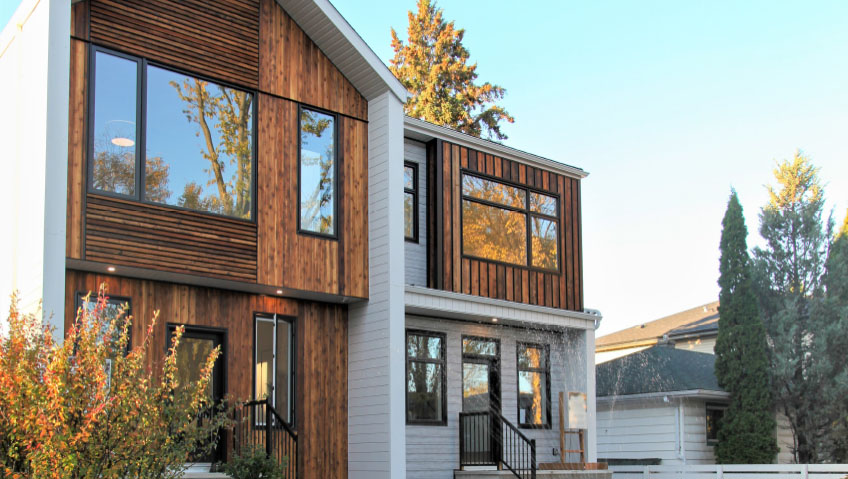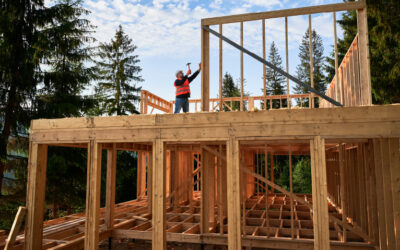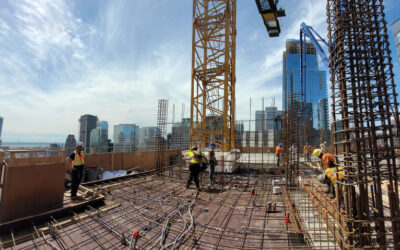The weeks leading up to September’s fierce federal election saw Canada’s parties divided on many issues – but the overriding message was clear: from coast to coast, we are in a housing crisis, and something needs to be done, now.
There were often vast differences in political promises, too – from building a million homes over three years and forcing the Canada Mortgage and Housing Corporation (CHMC) to slash mortgage insurance rates by 25 percent, to imposing an “empty home tax” on foreign investors.
For almost 80 years, the Canadian Home Builders’ Association (CHBA) has served as “the voice of Canada’s residential construction industry.” With a strength of about 9,000 members including home builders and renovators, trade contractors, product manufacturers, land developers, lending institutions and related businesses, the CHBA plays a vital role in developing communities from coast to coast.
This includes conveying the needs and wants of homeowners to governments, and providing information for Canadians purchasing a new home, or renovating existing ones.
One of the Association’s most important roles is working tirelessly to see that Canadians have access to housing they can afford, an ongoing issue in the nation. Now, under CEO Kevin Lee, the CHBA continues to advocate on behalf of Canadians as it has since 1943.
Working for Canadians
Founded a few years before the CMHC, the Canadian Home Builders’ Association recognized that there would be a need for housing once World War II ended.
Back then, the industry was facing challenges, including a need to professionalize the industry, bring in good codes and construction standards, and have consistency among bylaws in different cities; many of these issues remain. There was also a need to keep developing construction technologies and work on the challenge of making housing affordable.
“Just like today,” says Lee. “Working all across the country as one voice to inform government is obviously a lot better than trying to do it on an individual or regional basis. The things that led to the formation of the CHBA then are priority items that we work on to this day.”
Long before taking on his current role as CEO, in 2013, Lee was committed to the building sector. Earning his Bachelor of Engineering (B.Eng) and Master’s Degree in Architecture from McGill University, Lee has spent much of his career in housing, including serving in the private sector in residential construction, and also serving the federal government in the area of residential construction .
He was deputy director at CanmetENERGY (Natural Resources Canada), and also director of the Housing Division for the Office of Energy Efficiency, also at Natural Resources Canada.
When the opportunity with the CHBA came up, it was the best of both worlds: a chance to work as leaders in best practice for a not-for-profit organization with great volunteers all across the country, with the objective of advancing residential construction, housing, and affordability for Canadians.
It also presented a challenge: taking a private-sector role and making a big impact for the industry, keeping abreast of not only what the industry was doing, but informing government and making recommendations to government for the betterment of homebuyers and homeowners.
“So it really checked off a lot of good boxes, and over the course of eight years it has proven to be exactly that,” he says. “It’s a challenging and rewarding position that I continue to enjoy a lot.”
With a deep background in residential construction, housing technology, and all the nuances of the sector itself – plus the qualification of having worked inside government – Lee’s experience in housing covers the practical to the political.
“One of the biggest priorities is federal government advocacy, and so understanding how the federal government works is obvious a big asset when undertaking those roles,” he says of the CHBA which has a federated model of local, provincial and national associations, all working together.
How did we get here?
For Lee and his team at the Canadian Home Builders’ Association, the questions they hear most often are, why this? Why now? What brought Canada to this point where home ownership is out of the reach of so many young and new Canadian families? Although the recent federal election brought the issue to the attention of many, housing affordability has been a priority for the CHBA for a very long time; the election provided the motivation and opportunity for party leaders to share their views on how to address the crisis.
In 2017, a report from the CHBA focusing on the demographics of Canada noted a ‘baby-boomlet’ occurring among Millennials, which was expected to continue over the decade.
By the Association’s estimates, Canada was expected to be about 300,000 family housing-units short during this time because of the rising demographic. As a result, Canada had been challenged to build more homes over recent years, while experiencing some efforts to suppress demand through demand-side measures by government, making it much harder for Canadians to become homeowners at a young age.
Needing more from a home
Then, on March 11, 2020, the World Health Organization (WHO) declared COVID-19 a global pandemic. With many workers forced to stay home for safety reasons, dining room tables and spare rooms soon became makeshift office space and workout areas. After a few months of living in close quarters – and saving money on restaurants, shopping, and entertainment – many Millennials, younger and older alike, decided to purchase their first home, or move to a larger place.
Although an urgent need for housing has existed for years, COVID has accelerated the situation. So, a combination of Canadians saving money during the pandemic, lower interest rates (thus lower mortgage rates), and the need to upgrade to bigger premises to accommodate home offices, gyms, and a place to school the kids are all factors.
And perhaps the biggest is that many of us can now work remotely, connecting through Zoom, Teams, GoTo Meetings, and similar virtual platforms, fuelling an exodus from crowded cities to peaceful suburbs and areas even more remote.
“Through the pandemic, we saw the unleashing of this pent-up demand,” says Lee. “There weren’t enough houses in the market to begin with, and certainly not enough to absorb people coming onto the market. Add all that together and you have a perfect storm that really emphasizes the challenge we’ve been talking about for ages: that there are just not enough houses to go around.” Along with a factor making home ownership more difficult: accelerating house prices.
This year saw one of Canada’s big five banks, Scotiabank, publish the report Estimating the Structural Housing Shortage in Canada: Are We 100 Thousand or Nearly 2 Million Units Short? Produced by Jean-François Perrault, the report doesn’t pull any punches when it refers to “a chronic insufficiency of home supply” temporarily worsened by the pandemic, record-low mortgage rates, and a dramatic change in housing by type and location. Perrault asserts that “Past and future macroprudential measures are ineffective Band-Aids that do not address the underlying insufficiency of supply.”
Many of the findings in the report are discouraging, particularly that Canada has the lowest number of housing units per 1,000 residents of any G7 country, a figure that has continuously worsened since 2016 because of population growth. Most telling is that an extra 100,000 dwellings would have been needed “to keep the ratio of housing units to population stable since 2016 – leaving us still well below the G7 average.”
Thinking outside the housing box
The solution to Canada’s housing shortage is far from being a one-size-fits-all quick fix. Although the recently re-elected federal government can lead, local and provincial governments must be on board as well.
Fortunately, there are some solutions, including modular and laneway housing. A rapid housing initiative for social housing implemented by the federal government over the past few years identifies modular construction, which will get things done faster and cut through red tape, with quality of housing remaining high. This, says Lee, is exactly what is needed right now for market-rate housing as well.
“When we talk about affordability in market-rate housing and available supply, one of the biggest challenges we face is the ability to get through red tape, through all of the processes and zoning challenges and NIMBYism,” he says. “And I think one of the things the rapid housing initiative shows is, where there’s a will there’s a way, and you can get good housing built quickly.”
While so-called “tiny homes” measuring a few hundred square feet are also part of the equation, it is important to differentiate these types of housing from non-year-round trailers meant for different purposes. Today’s modular homes aren’t trailers – modular homes can be anything from a beautiful tiny home to a 6,000 square foot mansion, and anything in between.
For Lee and his team at the Canadian Home Builders’ Association, the Number One priority remains affordability, and ensuring that the business, policy, and mortgage environments are in place to enable Canadians to still become homeowners as we move forward. One of the biggest factors is getting more supply and market-rate housing online.
“In recent times, there has been an emphasis by the federal government on what is termed ‘affordable housing,’ which is actually social housing,” says Lee. “That is very important. We do need more social housing, but at times governments have sort of conflated affordable housing with housing affordability. Building more social housing doesn’t help the person who is worried about whether their children are going to be able to afford to buy a home – those are two entirely different discussions.
“The expectation for Canadians is that a young, hard-working, middle-class couple should be able to save up for a down payment and buy their first home. That should be a dream that is within reach. So making sure affordability is front and centre will be critical, and getting more supply is a big part of that.”
Coming together
And while the issue of building more Net Zero and energy-efficient homes remains important, this must be done in a way that doesn’t damage affordability and the process. All of this – including getting more affordable and energy-efficient homes on the market – is possible, but it requires all of industry and government to row in the same direction, so to speak.
A leader in energy-efficient homes, the CHBA was part of the founding group of the R-2000 program in the 1980s, which was followed by Energy Star, again something in which CHBA has been heavily involved; today, the Association has its own Net Zero home labelling program. Working with a council, the CHBA has labelled over 670 Net Zero and Net Zero-ready homes across Canada. Of equal importance is the need to help consumers make smart initiatives about renovating existing homes, and additional incentives.
“We are big proponents of mandatory home energy labelling at the time of resale of a home, just so that consumers have that information,” says Lee. “When you buy a new home, you know what you’re getting – the latest and greatest energy efficiency requirements that are already built into the building code, and you have a chance to do even more through Net Zero if you want to invest your money that way. With an existing home, it’s trickier to know what you’re getting,” he says.
“When you buy an existing home, chances are it’s not nearly as energy efficient as a new one, and even if it is, it’s hard to tell sometimes. So that’s why we need home energy labelling, and why we are really focusing on the existing housing stock as an important part of the climate change solution. Governments are starting to recognize that, but the pushing toward Net Zero regulation too soon – through the building code – need to be watched carefully to make sure Canadians can still afford to buy homes.”
Serving as an example of what can be done with housing, in 1997 Lee built his own advanced Victorian-style home that uses half the energy of an R-2000 home, and was featured on the Discovery Channel. He still lives in the house with his family.
“I thought it was important to show that any house could be energy efficient, and it doesn’t have to look like a spaceship. So it all worked out because here I am 24 years later in the same great home.’













